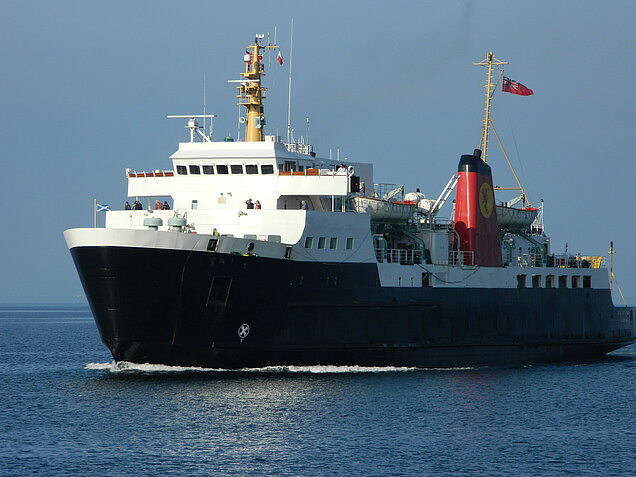Laser stripping from ships is a very interesting alternative for shipboard corrosion repair and surface preparation for new paint. These are currently the two heaviest and most expensive maintenance challenges that ship operators have to face.
Our Swipe2Clean laser cleaning technology offers utmost flexibility in removing the rust/oxide from the native metal surface.

Application of Fiber Laser Cleaning Technology in Ships
Fiber laser cleaning machine in shipbuilding industry
After a long time of use, ships are prone to aging, corrosion and other phenomena. Therefore, some technology is needed to renovate the hull. Traditional way is to use sand blasting process for processing, relatively mature, high efficiency, but its technology has defects, such as in the pretreatment of the roughing degree is beyond the standard. For a long time engaged in sand blasting operations workers body damage, pollution is serious, is greatly on the consumption of water electric power and artificial, relative to the sand blasting, chemical cleaning, polishing machine and other traditional cleaning method, laser cleaning has the basement without damage, accurate control, energy conservation and environmental protection of many advantages, such as will clamp down on some of the traditional cleaning method in the field of industry.
Ship Maintenance made easy with LASER-SWIPE
Laser cleaning for ship maintenance : the right solution - Ecologic and Economic
Shipboard corrosion control and preparation of surfaces for recoating are two of the most expensive maintenance challenges facing both military and civilian ship operators. For example, the US Navy estimates that fighting corrosion absorbs 25 cents of every maintenance dollar; the annual corrosion cost for Navy ships in 2017 was estimated at $5.6 billion. Ever-increasing operations tempo, as well as business economics, manning reductions, training cutbacks, shortened shipyard availabilities, and diminished waterfront/intermediate maintenance capacity all contribute to a growing need for new and better maintenance approaches.
Swipe2Clean ©: Lasermach’s laser ablation cleaning technology is a game-changer in this demanding environment.
Corrosion Removal By Laser
The Lasermach system removes rust and mill scale from steel materials like no other method. The laser excites the oxygen in the corrosion layer, popping the oxide off the native metal. Laser cleaning with color pulse control is highly selective, removing only metal oxides, and leaving the parent metal substrate intact.
The laser is highly selective, removing only metal oxides, and leaving the parent metal substrate intact. Laser decoating and surface preparation of original grit-blasted surfaces removes corrosion and coatings to reveal the original surface roughness characteristics. A surface that has been laser ablated is ready to recoat, without any further preparation.
The physics of the laser process make it exceptionally effective in removing corrosion products from weldments and complex details in ships’ structures. The laser can efficiently remove corrosion products from any textured surfaces or notch details that the laser can “see”.

Paint removal from steel structure is executed for shipyards of marine and offshore engineering. Due to environmental unfriendliness and unhealthy drawbacks of sand blasting technique, laser ablation technique is proposed as a substituting method. By absorbing high energy of the 1064 nm pulsed laser, the paint is vaporized quickly.
The ablated debris is then collected by using a suction pump. Initial metal surface of the steel is exposed when laser beam irradiates perpendicularly and scans over it. The cleaned surface fulfills the requirements of surface preparation standards ISO 8501 of SA2. The repainting can be embedded onto the laser cleaned surface to bond much more tightly. The excellent adhesion strength of 20 MPa between repainted coating and the substrate is achieved, which is higher than what is required by shipyards applications.
-
The physics of a laser cleaning process make it unprecedentedly effective in removing corrosion from any complex details in ships’ body and components.
-
The laser energy absorption is highly selective, thus, can remove metal oxides while keeping the native metal substrate intact. The rust/oxide is either vaporized or suctioned away as particles.
-
It is possible to selectively remove coatings in a multi–layer paint system. The ablation depth for single scan can be controlled within a few micrometer and this process is repeated until reach the desired depth.
-
Laser technology can precisely clean certain spots on that surface, giving the focus beam spot size can be as small as tens of micrometers.
-
Laser process can produce roughness surface characteristics while removing corrosion to get ready for re-painting without any further preparation.

To improve cleaning efficiency, laser derusting uses high energy, high frequency, high power characteristics. Lasermach’s uses pulsed fiber laser Sources that can produce pulses with large single pulse energy of 30mJ, high average power of 500W/1000W/1500W, and high repetition frequency up to1000kHz for efficient laser derusting.
By adjusting different combination of the above parameters,
Lasermach High Power Swipe2Clean series laser can remove various types of rust/painting.
The corrosion products of steel are normally made of iron ferro-oxide (Fe2O3) in the color of red or yellow. The iron Iron-oxide on the metal surface can be removed rapidly with large beam diameter and high average power. Corrosion product of ferriferrous oxide / ferrous oxide layer is stubborn and requires higher power density for removal, therefore, small beam diameter and large pulse energy are needed.
